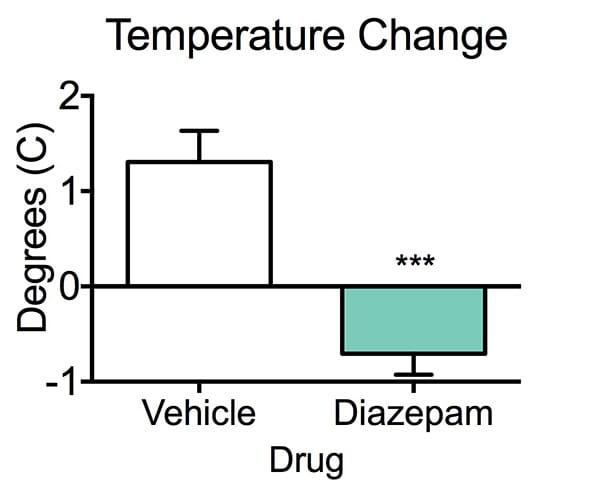Stress-Induced Hyperthermia
Discover how Melior’s unique phenotypic screening platforms can uncover the untapped value of your candidate therapeutic
The chronic mild stress (CMS) model is a paradigm developed in animals to model the relatively minor and unanticipated irritants that lead to a state of anhedonia (an inability to experience pleasure) in some individuals.
Melior Discovery has developed a chronic mild stress paradigm that leads to increased behavioral depression and elevated corticosterone levels in rodents. Other parameters that can be evaluated in the CMS model include Coat Assessment, Hyperthermia, Sucrose Intake, and behavior modification such as seen in the Tail Suspension Test. These changes can be attenuated by treatment with an antidepressant.
Stress and general emotional state can have a multitude of effects on the body as the two are inextricably linked via the hypothalamic–pituitary–adrenal axis (HPA axis). Thus, changes in physiology, such as temperature, can be indicative of changes in stress.
When exposed to brief periods of stress rodents display an increase in body temperature (hyperthermia). Certain classes of anxiolytic and antidepressant drugs can attenuate stress-induced hyperthermia.
Melior Discovery’s stress-induced hyperthermia model offers a quick way to screen for anxiolytic potential in test compounds.
The data above illustrate the effects of diazepam (Valium®), a benzodiazepine, on body temperature following a brief stress in mice. While vehicle-treated animals exhibited a characteristic stress-induced increase in core body temperature, diazepam-treated animals did not exhibit an increase in temperature that is indicative of a stress response. Data are mean ± SEM; ***p<0.0001 compared to vehicle (N=16).
The Stress-Induced Hyperthermia Model can be run in an acute mode (study completed in one day) by evaluating test articles after a single administration although we often use it with our chronic mild stress model. Ideal group size for most studies is approximately 12 animals. It can be performed in mice or rats. Since the assay is non-invasive it can be easily incorporated several times over the course of a chronic study.


 Interested in running a Stress-Induced Hyperthermia assay?
Interested in running a Stress-Induced Hyperthermia assay?